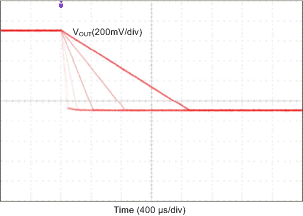JAJSH47 March 2019 TPS65653-Q1
PRODUCT PREVIEW Information. Product in design phase of development. Subject to change or discontinuance without notice.
- 1 特長
- 2 アプリケーション
- 3 概要
- 4 改訂履歴
- 5 概要(続き)
- 6 Pin Configuration and Functions
- 7 Specifications
-
8 Detailed Description
- 8.1 Overview
- 8.2 Functional Block Diagram
- 8.3
Feature Description
- 8.3.1 DC/DC Converters
- 8.3.2 Sync Clock Functionality
- 8.3.3 Power-Up
- 8.3.4 Regulator Control
- 8.3.5 Enable and Disable Sequences
- 8.3.6 Device Reset Scenarios
- 8.3.7 Diagnosis and Protection Features
- 8.3.8 Operation of the GPO Signals
- 8.3.9 Digital Signal Filtering
- 8.4 Device Functional Modes
- 8.5 Programming
- 8.6
Register Maps
- 8.6.1
Register Descriptions
- 8.6.1.1 DEV_REV
- 8.6.1.2 OTP_REV
- 8.6.1.3 BUCK0_CTRL_1
- 8.6.1.4 BUCK0_CTRL_2
- 8.6.1.5 BUCK1_CTRL_1
- 8.6.1.6 BUCK1_CTRL_2
- 8.6.1.7 BUCK0_VOUT
- 8.6.1.8 BUCK1_VOUT
- 8.6.1.9 BUCK0_DELAY
- 8.6.1.10 BUCK1_DELAY
- 8.6.1.11 GPO_DELAY
- 8.6.1.12 GPO2_DELAY
- 8.6.1.13 GPO_CTRL
- 8.6.1.14 CONFIG
- 8.6.1.15 PLL_CTRL
- 8.6.1.16 PGOOD_CTRL_1
- 8.6.1.17 PGOOD_CTRL_2
- 8.6.1.18 PG_FAULT
- 8.6.1.19 RESET
- 8.6.1.20 INT_TOP_1
- 8.6.1.21 INT_TOP_2
- 8.6.1.22 INT_BUCK
- 8.6.1.23 TOP_STAT
- 8.6.1.24 BUCK_STAT
- 8.6.1.25 TOP_MASK_1
- 8.6.1.26 TOP_MASK_2
- 8.6.1.27 BUCK_MASK
- 8.6.1.28 SEL_I_LOAD
- 8.6.1.29 I_LOAD_2
- 8.6.1.30 I_LOAD_1
- 8.6.1
Register Descriptions
- 9 Application and Implementation
- 10Power Supply Recommendations
- 11Layout
- 12デバイスおよびドキュメントのサポート
9.2.3 Application Curves
Measurements are done using typical application set up with connections shown in Figure 22. Graphs may not reflect the OTP default settings. Unless otherwise specified: V(VIN_Bx) = V(VANA) = 3.7 V, VOUT_Bx = 1 V, TA = 25°C, L = 0.47 µH (Murata DFE252012PD-R47M), COUT_BUCK = 22 µF, and CPOL_BUCK = 22 µF.
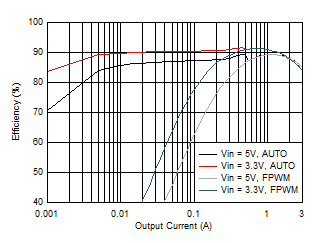
| VOUT = 1.8 V |
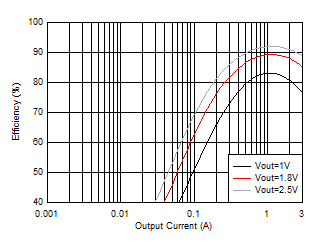
| VIN = 5 V |
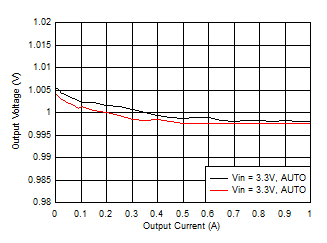
| VOUT = 1 V |
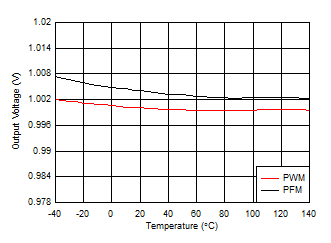
| Load = 1 A (PWM) and 0.1 A (PFM) | ||
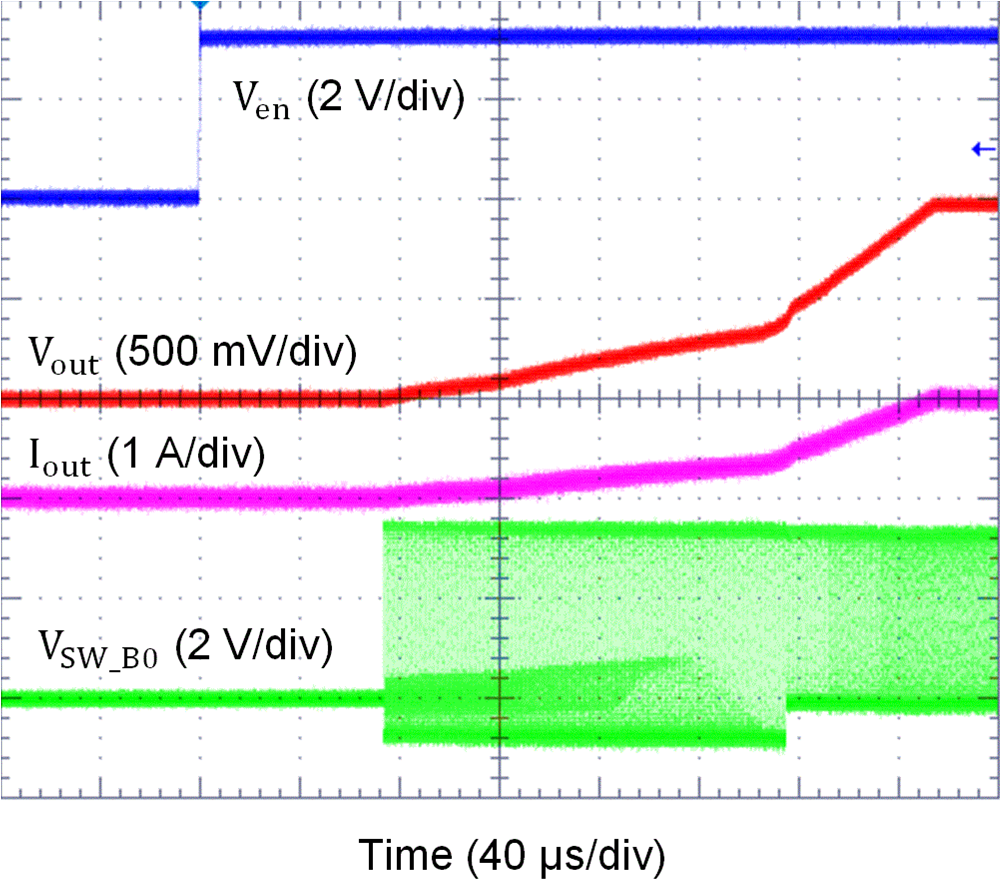
| Slew-rate = 10 mV/µs | RLOAD = 1 Ω | VOUT = 1 V |
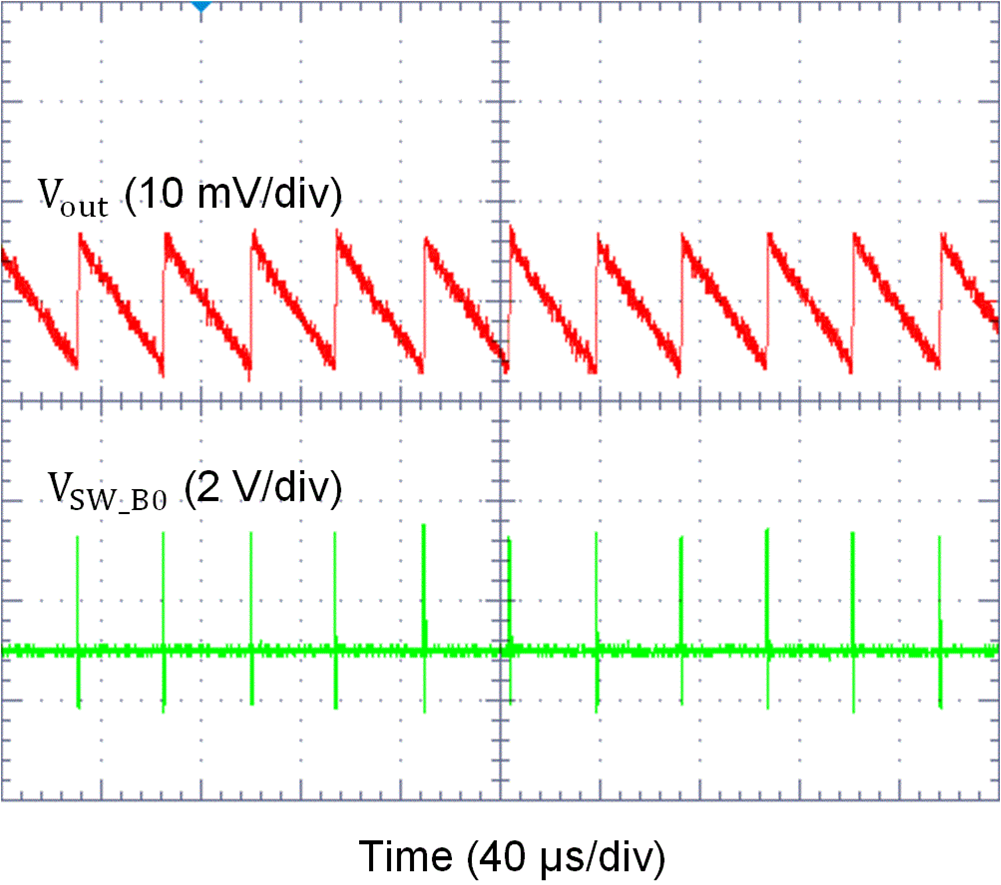
| IOUT = 10 mA |
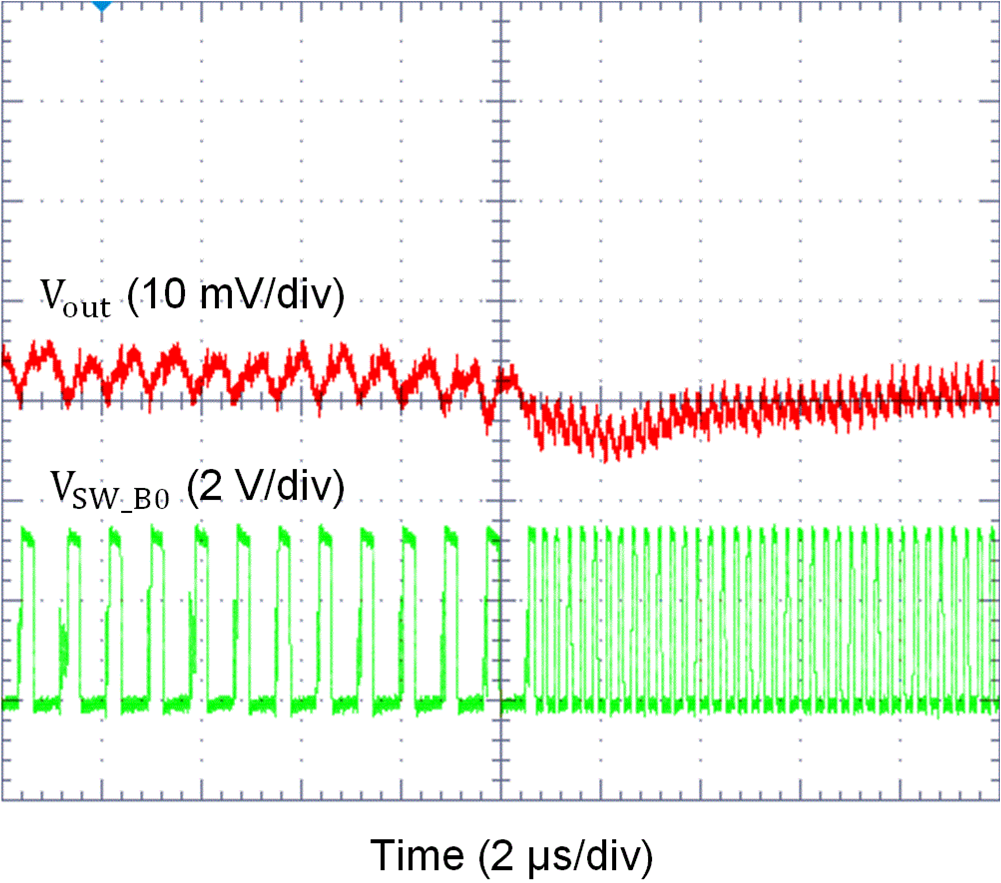
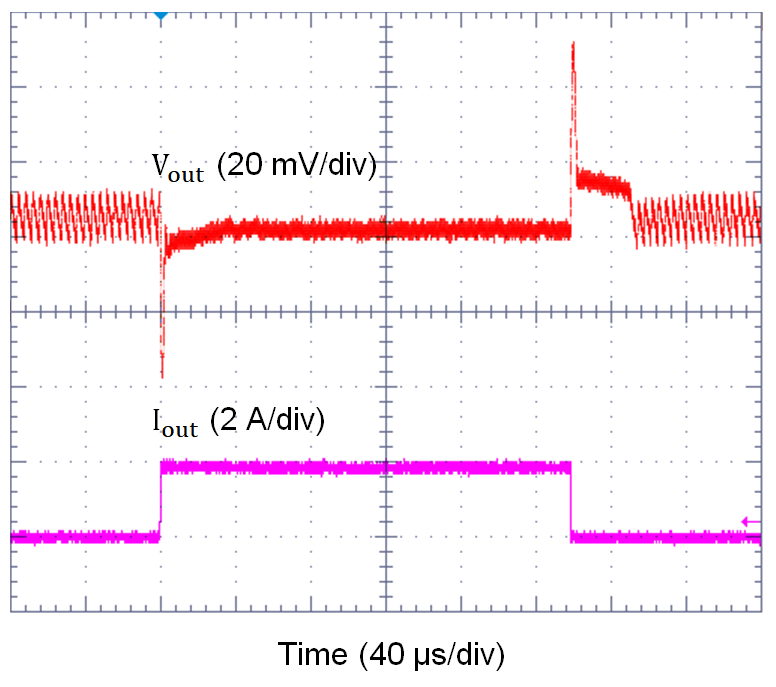
| IOUT = 0.1 A → 2 A → 0.1 A | TR = TF = 400 ns | |
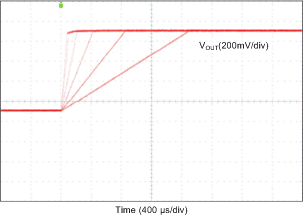
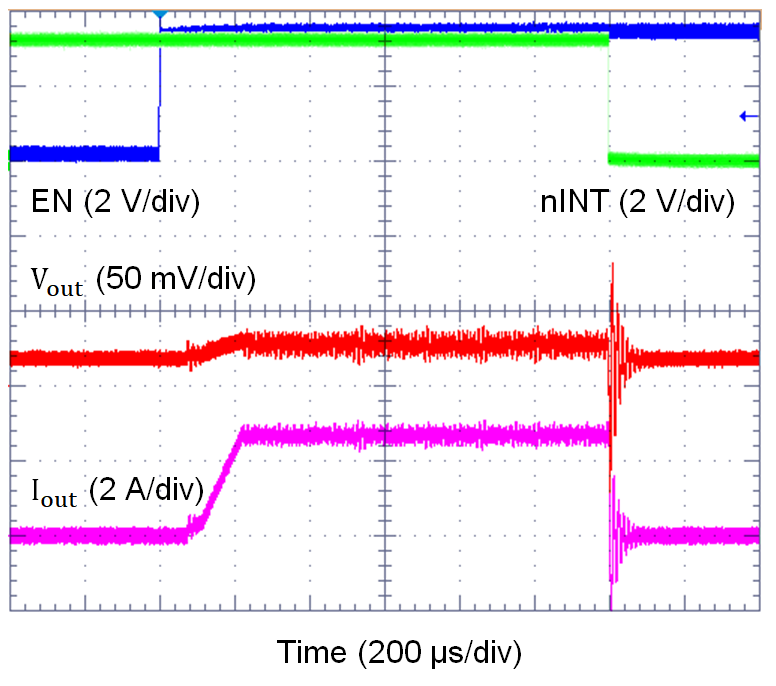
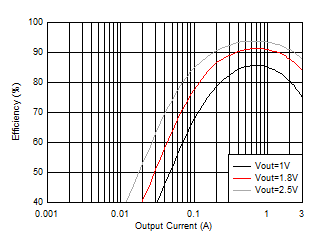
| VIN = 3.3 V |
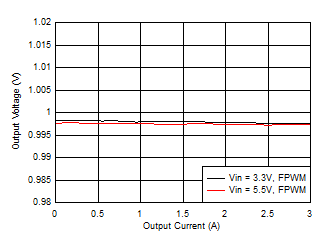
| VOUT = 1 V |
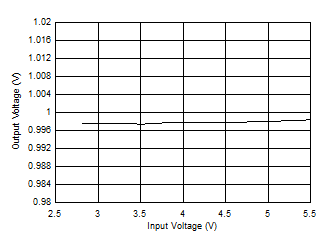
| VOUT = 1 V | Load = 1 A |
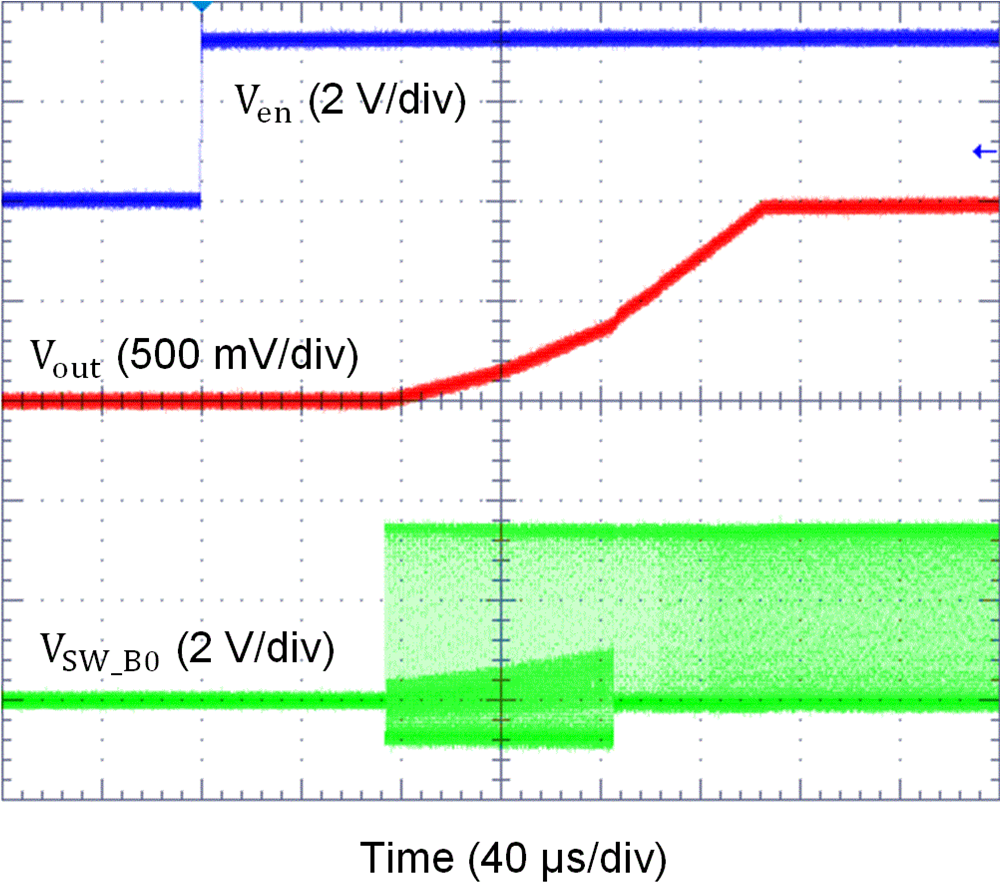
| Slew-rate = 10 mV/µs | ILOAD = 0 A | VOUT = 1 V |
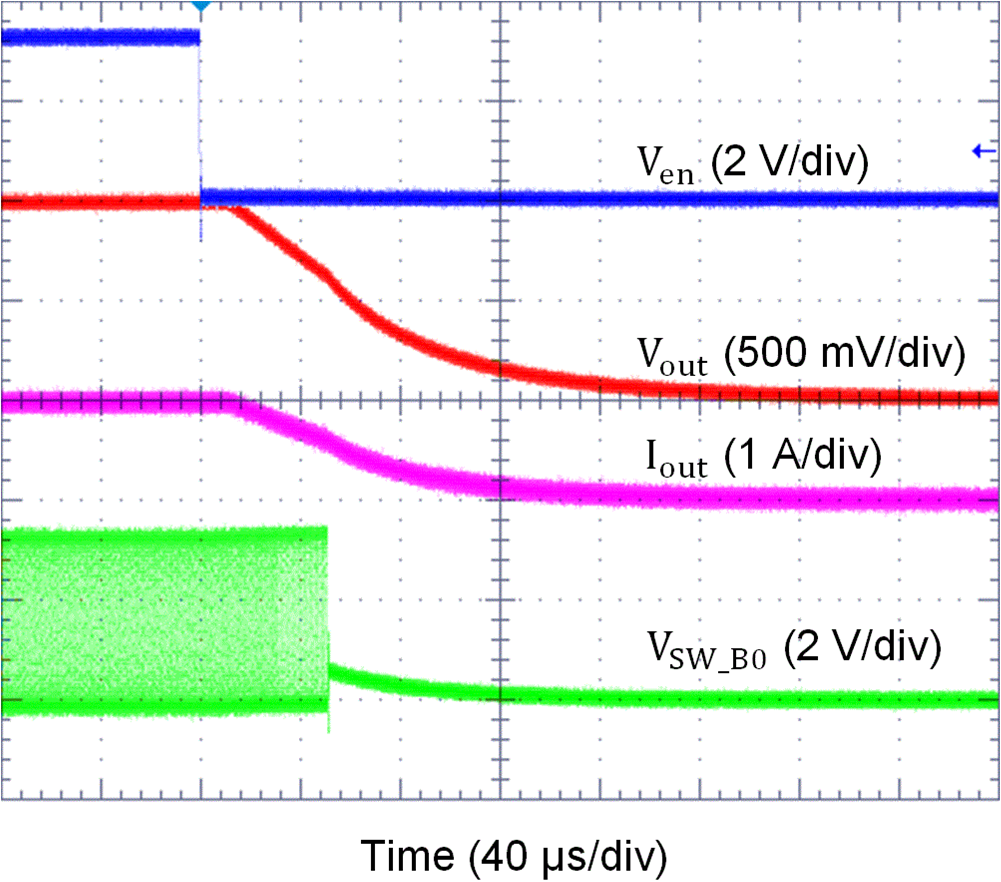
| Slew-rate = 10 mV/µs | RLOAD = 1 Ω | VOUT = 1 V |
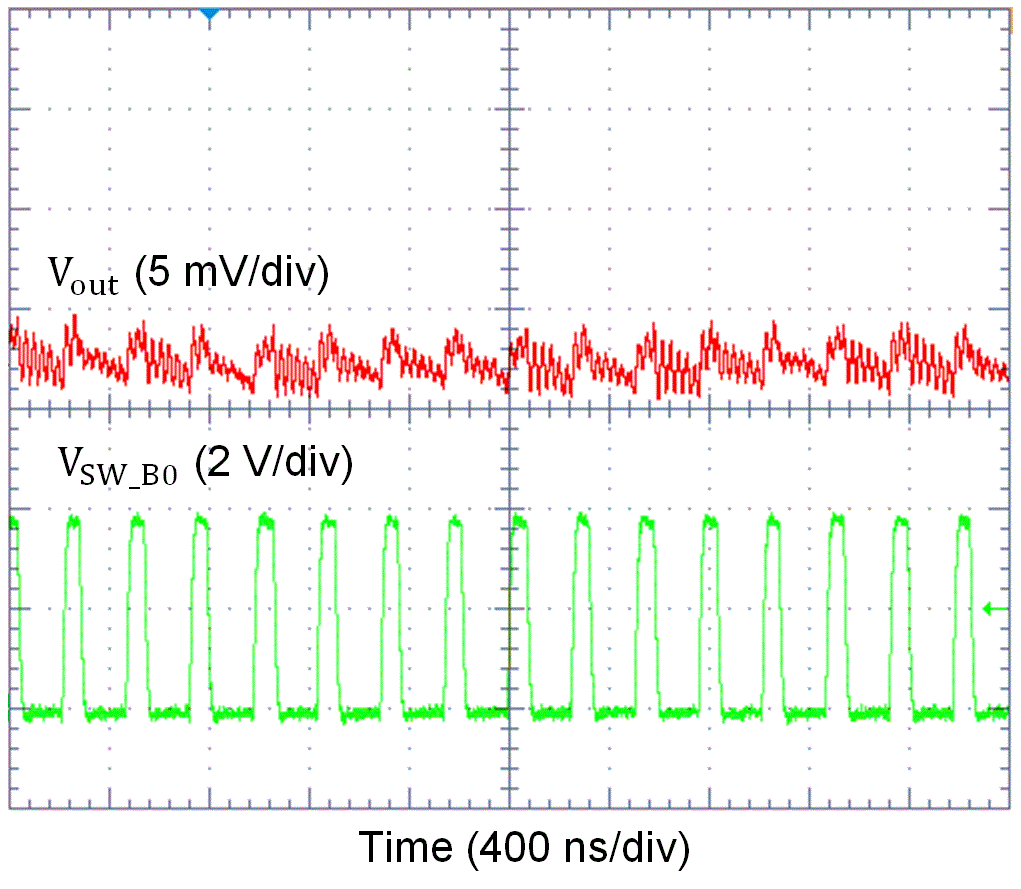
| IOUT = 500 mA |
Forced PWM Mode
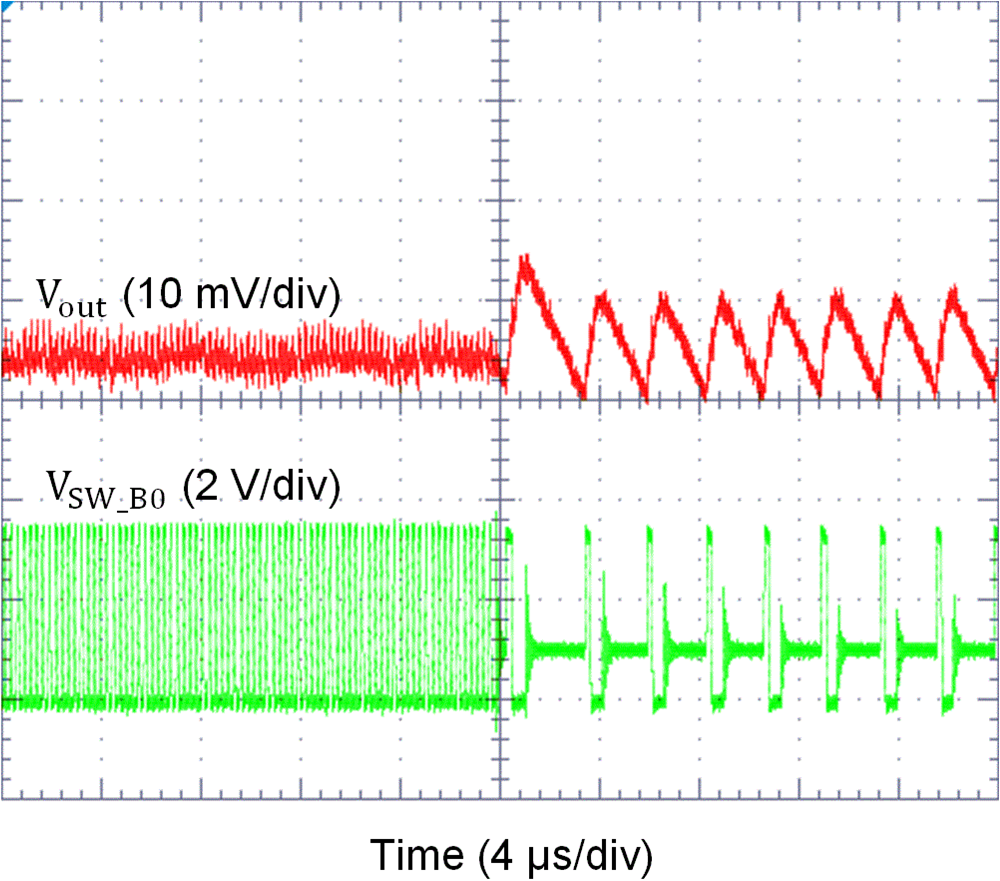
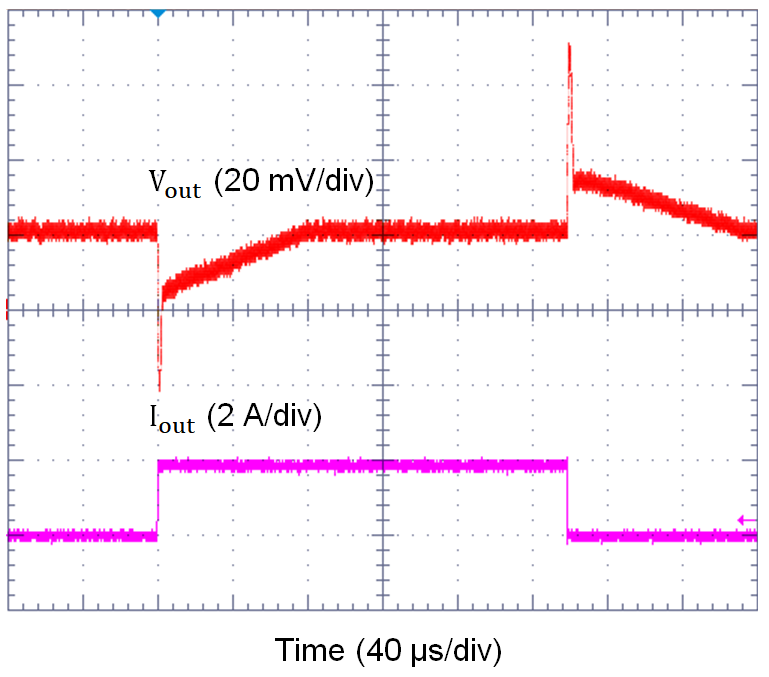
| IOUT = 0.1 A → 2 A → 0.1 A | TR = TF = 400 ns | |
